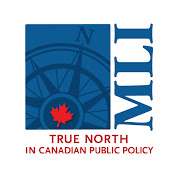A study of hot spots for collisions between ships and whales around the world, including Canadian waters, offers a map for measures to prevent the deadly strikes that could drive some species to extinction, one of the British Columbia-based authors says.
Chloe Robinson said reported strikes represent a fraction of their true extent, and a lack of protection measures leaves whales vulnerable as global shipping expands.
The study found shipping takes place across 92 per cent of the ranges for humpback, blue, fin and sperm whales worldwide, but measures to reduce vessel strikes have been implemented in less than seven per cent of high-risk areas.
“That could really spell, you know, potential extinction for some of these species,” said Robinson, director of whales for Ocean Wise, a B.C.-based organization that provided data for the paper published in the peer-reviewed journal Science.
“A recent study estimated anything up to 20,000 whales …





![Study of whale strike hot spots could map out solutions [Video]](https://canadanewsvideo.com/wp-content/uploads/2024/11/mp_677499_0_whalestrikesships171202721732309624909jpg.jpg)




![B.C. launches short-term rental registry with annual fees in bid to stop market speculators [Video]](https://canadanewsvideo.com/wp-content/uploads/2025/01/mp_716540_0_shorttermrentalregistrykahlonzhoujpg.jpg)
![B.C. Wildfire Service learning from response in California, information officer says [Video]](https://canadanewsvideo.com/wp-content/uploads/2025/01/mp_716537_0_californiawildfiresJPG.jpg)

![Inside the monumental effort behind LAs firefight, from strategy to meals and laundry WSOC TV [Video]](https://canadanewsvideo.com/wp-content/uploads/2025/01/mp_715054_0_https3A2F2Fcloudfrontuseast1imagesarcpublishingcom2Fcmg2FQD5TRQVFQLO2UOYAKHTDGXKGFAjpg.jpg)
